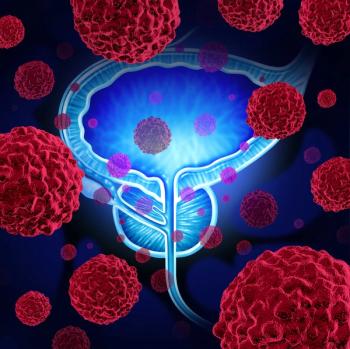
Oncology NEWS International
- Oncology NEWS International Vol 10 No 2
- Volume 10
- Issue 2
Arsenic Trioxide Highly Effective in Relapsed Acute Promyelocytic Leukemia
NEW YORK-Low doses of arsenic trioxide (ATO) given by intravenous injection are highly effective at inducing remission in patients with relapsed acute promyelocytic leukemia (APL) and should be tested in patients with newly diagnosed disease. These results and recommendation were based on research conducted at Memorial Sloan-Kettering Cancer Center (MSKCC) in New York.
NEW YORKLow doses of arsenic trioxide (ATO) given by intravenous injection are highly effective at inducing remission in patients with relapsed acute promyelocytic leukemia (APL) and should be tested in patients with newly diagnosed disease. These results and recommendation were based on research conducted at Memorial Sloan-Kettering Cancer Center (MSKCC) in New York.
Steven L. Soignet, MD, lead investigator for the study and director for Chemotherapy Practice at MSKCC, presented the combined results of the US pilot and the multicenter trial of ATO in patients with relapsed APL. Patients were treated with daily infusion of ATO until the time of bone marrow complete remission. Patients who met all criteria for complete response (CR) were then eligible to receive an additional 25 doses of ATO as consolidation.
"The addition of ATRA [all-trans-retinoic acid] to chemotherapy for the treatment of APL has significantly improved the remission rate and has more than doubled the overall survival compared to patients treated with chemotherapy alone. Despite this advancement, 20%-30% of these patients relapse," Dr. Soignet said. This study examined the efficacy of ATO as an agent for inducing remissions in relapsed patients.
The study included 52 patients with a median age of 39 (range, 5-75) in either first (22), second (20), or third (10) relapse. Seven of these patients were postallogeneic bone marrow transplant.
Overall Response of 87%
Dr. Soignet reported that 45 patients achieved a CR for an overall response rate of 87%. In an interview with ONI, coinvestigator David Scheinberg, MD, PhD, said previous studies by Chinese researchers and a US pilot study "suggested that we would have a high response rate in a larger study, and we did." Dr. Scheinberg is chief of the Leukemia Service at MSKCC.
"ATO appears to down-regulate the actions of some of the abnormal proteins found in APL that prevent normal maturation of the myeloid cell. Once unblocked, the cells mature and die," Dr. Scheinberg said.
The median number of doses required for induction was 31 (range, 14-60). Of the 45 patients achieving a CR, 31 patients (69%) remain alive at a median follow-up of 18 months. Of these survivors, 16 patients received ATO as maintenance therapy only, and 15 patients underwent transplant.
Dr. Soignet said that toxicities were manageable and consisted of mild hyperglycemia, QTc prolongation on electrocardiogram, peripheral neuropathy, skin rash, leukocytosis, and APL syndrome. There were no treatment-related deaths.
"We are now combining retinoic acid, monoclonal antibody HuM195, and ATO before chemotherapy in an attempt to reduce and ultimately eliminate the use of chemotherapy in this disease," Dr. Scheinberg said.
Articles in this issue
almost 25 years ago
Activated T Cells Can Alter Behavior of Leukemic B Cellsalmost 25 years ago
Response Continues for at Least 8 Months with Ibritumomab Tiuxetanalmost 25 years ago
Synthetic Anthracycline Produces High Response Rates in SCLCalmost 25 years ago
Ibritumomab Tiuxetan Produces 73% Response Rate in B-cell NHLalmost 25 years ago
G-CSF Might Prolong Rituximab Responses in NHLalmost 25 years ago
Use of CAD Increases the Early Detection of Breast Cancer by 20%almost 25 years ago
Rituximab Plus Fludarabine May Be Good Alternative to Rituximab Plus CHOPNewsletter
Stay up to date on recent advances in the multidisciplinary approach to cancer.

























































































